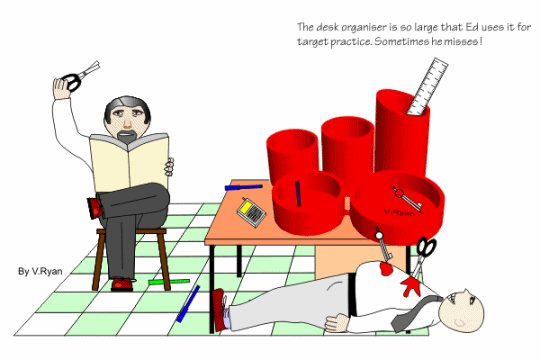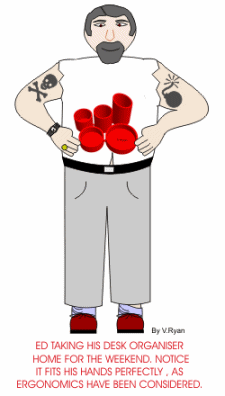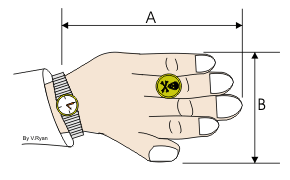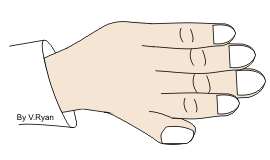| CLICK HERE FOR INDEX PAGE | |
DESK ORGANISER AND ERGONOMIC CONSIDERATIONS |
|
| V. Ryan © 2005 | |
|
Ed, our specimen office worker, has employed a team of experts to design a desk organiser. Unfortunately he employed the wrong team (he trained them himself) and they have ignored ergonomic factors. Ergonomics is all about collecting measurements and applying them to a design. The design team have failed to measure the various pieces of equipment that Ed intends to store in his desk organiser. As a result of ergonomics not being considered, the manufactured desk organiser is far too large for its purpose. It takes up most of the desk top making it impossible for Ed to carry out his office duties. |
|
|
|
|
|
|
|
|
|
The design team should have collected a range of measurements/sizes of the stationery equipment Ed is likely to use during his working day. The design and size of the desk organiser should be based on these Ďergonomicí measurements. This is likely to ensure that it is the correct size for its function / purpose. The diagrams opposite display some of the important measurements that need collecting. |
|
|
|
|
Questions: |
|
|
|
A new team of designers has produced a desk organiser
that Ed likes. All ergonomic factors have been taken into account and
this includes the size of Edís hands. Ed often picks up and moves
the organiser. Also, he meticulously places stationery in each of its
compartments. The design team have recognised ergonomics as an important
design factor. |
|
Opposite are two of the important measurements of Edís hand. If a desk organiser is designed with these measurements kept in mind, it should be easy to use, carry, hold and move the organiser. Furthermore, it should be easy to fit pieces of stationery into each of the compartments and remove them when required. |
|
|
|
QUESTIONS: |
|
4. Explain how you feel ergonomics have been considered in the design of your mobile phone. |
|
|
|
|





